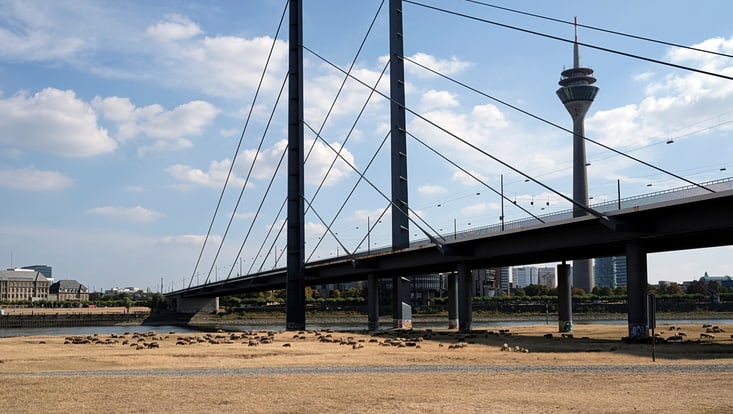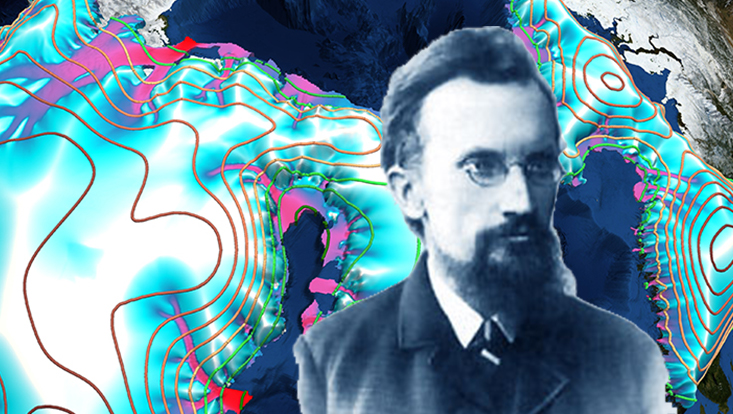Plant Community Adapts to Rising Sea LevelLower methane emissions on coasts than previously assumed
14 October 2020, by Meike Lohkamp

Photo: Thomas J. Mozdzer
Mangroves, salt marshes and seagrass are common along many coasts around the globe. They form unique ecosystems, which absorb huge amounts of carbon dioxide (CO2) from the atmosphere and oceans, and store it in their leaves, stems, branches and roots, as well as in the sediments below. However, when the tide changes they are submerged, leading to a lack of oxygen on a regular basis.
When there isn’t enough oxygen, these organic substances are broken down, producing methane – a greenhouse gas that is more than 25 times as potent as CO2. Until now, scientists assumed that climate change increased these methane emissions. A team of researchers led by ecologist Dr. Peter Müller from Universität Hamburg’s Center for Earth System Research and Sustainability (CEN) have now disproved this assumption, and have published their findings in the scientific journal Nature Communications.
As a result of climate change, the sea level is rising in many places, which will lead to more frequent flooding of coasts and ecosystems in the future. Peter Müller and his team found that the vegetation in coastal ecosystems adapts to this new situation by developing more flood-resistant plants, which, despite regular submersion, provide sufficient oxygen to the soil, and therefore produce less methane.
In a field study conducted on a salt marsh in Chesapeake Bay on the US East Coast, Müller and his team simulated the climate of tomorrow: one characterized by a rising sea level and a greater concentration of CO2 in the atmosphere. To do so, they installed what are known as mesocosms in the salt marsh’s tidal creeks. These large pipes, filled with soil from the salt marshes and the most common plant species found in them, were installed at various elevations. Accordingly, the pipes at lower levels were flooded more often than those higher up. In addition, for some of the plants, a fan was used to simulate greater CO2 concentrations, similar to those expected in 2100.
The team’s findings show: in general, with greater levels of CO2, plants and soils give off more climate-damaging methane. “CO2 acts like a fertilizer,” explains Peter Müller. “It causes more biomass to be formed, leading to more organic material in the soil. This, in turn, means more ‘food’ for the microorganisms responsible for producing methane.”
In addition, the simulated sea-level rise caused the plants and soil to emit more greenhouse gas. “When the salt marshes are regularly submerged, there is a lack of oxygen in the soil, and accordingly the microorganisms produce more methane,” says Müller. But then the researchers made an exciting discovery: over time, the vegetation in the mesocosms changed, and those plants that were better able to cope with flooding fared significantly better than their less well-adapted counterparts. “In times of flooding, the new plants are capable of transporting oxygen to the soil, to supply their roots. As a result, less methane is produced.”
These findings help us to better predict the dynamics of greenhouse gases in coastal ecosystems, both now and in the future. According to Müller: “The next step is to closely study the various plant communities and their influence on the methane cycle.”
Publication
Mueller P, Mozdzer T J, Langley JA et al. (2020): Plant species determine tidal wetland methane response to sea level rise. Nat Commun 11, 5154 (2020).
Dr. Peter Müller works as Geoscientist at the Centre for Earth System Research and Sustainability (CEN) at the Universität Hamburg.


